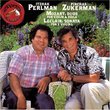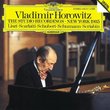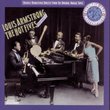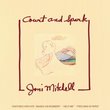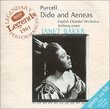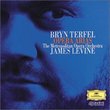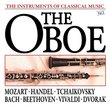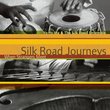| All Artists: John Corigliano, Daniel Barenboim, Chicago Symphony Orchestra, Stephen Hough, John Sharp Title: John Corigliano: Symphony No. 1 (World Premiere Recording) Members Wishing: 0 Total Copies: 4 Label: Erato Release Date: 8/10/1991 Genre: Classical Styles: Historical Periods, Modern, 20th, & 21st Century, Symphonies Number of Discs: 1 SwapaCD Credits: 1 UPC: 022924560125 |
Search - John Corigliano, Daniel Barenboim, Chicago Symphony Orchestra :: John Corigliano: Symphony No. 1 (World Premiere Recording)
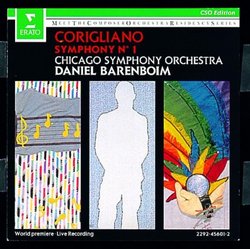 | John Corigliano, Daniel Barenboim, Chicago Symphony Orchestra John Corigliano: Symphony No. 1 (World Premiere Recording) Genre: Classical
![header=[] body=[This CD is available to be requested as disc only.]](/images/attributes/disc.png?v=a4e11020) ![header=[] body=[This CD is available to be requested with the disc and back insert.]](/images/attributes/disc_back.png?v=a4e11020) ![header=[] body=[This CD is available to be requested with the disc and front insert.]](/images/attributes/disc_front.png?v=a4e11020) ![header=[] body=[This CD is available to be requested with the disc, front and back inserts.]](/images/attributes/disc_front_back.png?v=a4e11020) |
Larger Image |
CD DetailsSimilarly Requested CDs
|
CD ReviewsTen Years Later it Looses Musical Impact Christopher Forbes | Brooklyn,, NY | 05/02/2003 (3 out of 5 stars) "My first inclination in reviewing this work is to quip: How do you win fame and repeat performances of a work? Write a piece that is a pastiche of 19th and 20th century techniques, dedicate the work to the victims of some politically or patriotically correct tragedy and then watch the prizes and commissions role in. But that's cynical...Corigliano's Symphony No. 1 (Of Rage and Remembrance) is undoubtedly deeply felt. After all, the composer has a strong personal connection to his subject, as he is a gay composer who lived through the worst of the AIDS crisis in a city that got much of the brunt of that terrible disease. But for better or worse (probably worse) the public seems to think the crisis is over and has turned attention to other disasters, and Corigliano's work now has to be judged as a symphony, not as a personal or political statement. I'm afraid to say the results are mixed. Corligliano is one of the leading lights, along with Druckman and Del Tredici, of the neo-romantic movement in contemporary music. Though this movement has become a catch all for all sorts of pastiche-based composing, its original impetus was to take techniques languages from the avant-garde of the 50s and 60s and marry those to a romantic sensibility and a generally tonal framework. In the best works of this style, (Druckman's Viola Concerto, Corligliano's Clarinet Concerto, Rouse's Symphony No. 1) this created a vital new style in the 70s and 80s...but has quickly lost steam. Corigliano's symphony shows some of that leaching away of style. Each of the first three movements is a musical portrait of a friend of the composer's who died during the crisis. The first movement is dedicated to a pianist friend of the composer. It contrasts violent orchestral outburst that are reminiscent of Penderecki, with a collage-based technique which sets an offstage piano playing the Albeniz Tango against lyrical but contrasted lines in the strings and winds. The effect is rather like Ives. The second movement is an orchestral tarantella and a portrait of another one of the composer's friends, a friend who died in full-blown AIDS-related dementia. The orchestration is quite brilliant, again harkening to Berio, Penderecki and Ives, and yet to my ear, the actual material of the movement is impoverished and structurally it just doesn't hang together. Perhaps that's the point, but a work should be able to stand apart from its program, and I don't believe this movement does. The third movement is a chaconne for cello, based on an improvisation the composer did with a cellist friend, who also died. This is the heart of the work, the melody is deeply moving and each variation goes on to portray another of the composer's lost friends. For my money this is the single reason to buy the CD. The final movement is a collage of the material from the first three movements gradually dying away. The work has it's moments, especially the third movement, but on the whole I find that there is a bit too much bombast and straining for effect. Corigliano isn't ready to let his material just be, but rather tries to wrench the most emotion out of it. One of the great secrets of the Big Romantics was the balance between restraint and release. Even in Mahler's biggest works, the full orchestral climaxes are few and most of the writing is economical in the extreme. Corigliano seems to want to let his orchestra wail at every opportunity, often when it is not warranted. This is particularly a problem in the second movement, but is shared even in the chaconne. This recording was the first, and was recorded by the commissioning orchestra, so one must assume that the recording is pretty definitive. The CSO sounds wonderful and Barenboim seems pretty much in control of the work, though perhaps too blasting in the loud sections. This may help create the impression of a schizoid piece that the work gives. In conclusion, I expect my review of this work to be controversial. The subject is still fresh and painful for many people, myself included. And I have no doubt that Corigliano was completely sincere in this work. But at least to me, his sincere emotion overwhelms his means of expression." Powerful modern work Christopher Forbes | 01/06/2000 (5 out of 5 stars) "A feather in the cap for the CSO for being given the opportunity to premiere a symphony that should go down as one of the most important works of the late 20th Century. The music dense and powerful, yet it should be considered accessible to both the modern and romantic ear. Its four movements are drenched in intense emotion, from the kinetic tension of the first movement, and the halliciatory and schizophrentic dance of the second, to the haunting piano being played offstage in the finale, this music will chill your spine as it intrigues your mind." WOW! This is a powerful recording! Christopher Forbes | 02/12/1999 (4 out of 5 stars) "John Corigliano uses this piece to express the whirlwind of emotions that are attached to the AIDS virus. The CD booklet describes how this work expresses the experiences that Corigliano underwent while witnessing friends and colleagues suffer from this terrible virus. Using a variety of unique sounds, he packs so much raw humanity into this 40-minute piece. In addition, its haunting themes inspire a vast array of feelings and ideas. Nostagically pleasant in parts and quite disturbing in others, Symphony #1 is an extremely vivid look into reality. A definite purchase for those wanting to try something new."
|

 Track Listings (4) - Disc #1
Track Listings (4) - Disc #1

